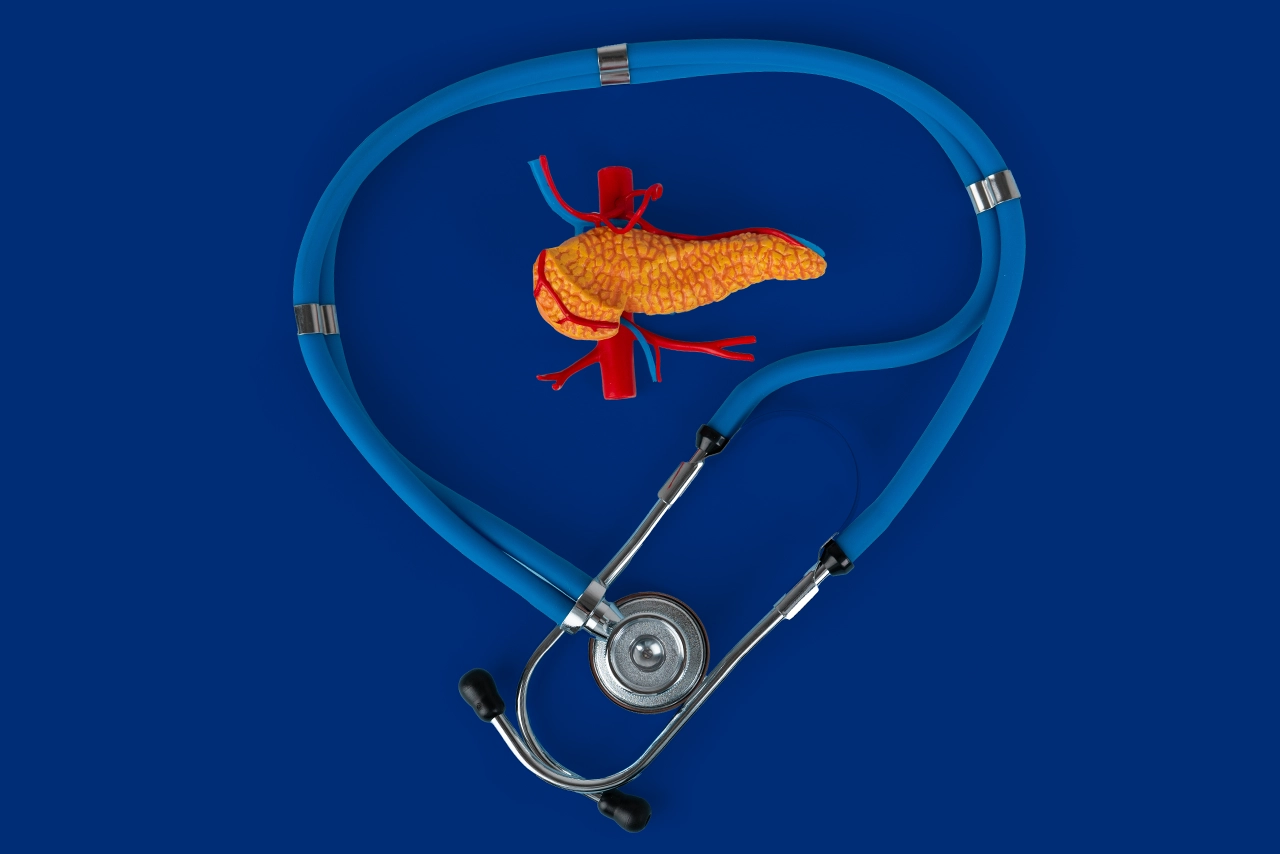To provide services at the highest level, we use cookies. Using the website requires you to choose settings related to their storage on your device. If you want to know what each type of cookie is used for, click the Details button below.
5 facts about the pancreas - you need to know this!30 lipca 2025 |

The pancreas is a gland located in the upper abdomen - it plays a key role in digestion and in regulating blood sugar levels. It secretes digestive enzymes into the small intestine and hormones like insulin and glucagon that control the body’s carbohydrate metabolism.
Pancreatic pain is most often caused by inflammation - which may be acute or chronic. Common causes include excessive alcohol intake, gallstones, injuries, infections, autoimmune diseases, or certain medications. The pain is typically severe, radiates to the back - and may worsen after meals.
In addition to pain, a diseased pancreas can cause digestive issues - like nausea, vomiting, diarrhea, bloating, and weight loss despite normal appetite. In advanced cases, symptoms of diabetes may also appear - such as increased thirst and frequent urination.
Yes, it?s possible to live without a pancreas. However, one must take digestive enzymes and insulin daily - as the body can no longer produce them. This requires strict discipline and ongoing medical supervision.
A post-pancreatectomy diet should be light and well-balanced. Avoid fatty, fried foods, alcohol, sugar, heavily processed items - and hard-to-digest meals. Small, frequent meals with lean proteins, cooked vegetables, and easily digestible carbohydrates are recommended.